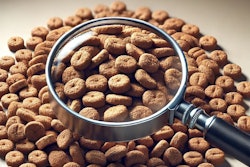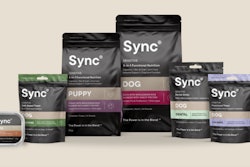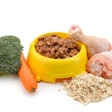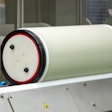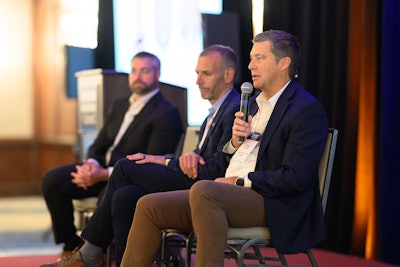
A critical disconnect between consumer perception and scientific reality around highly pathogenic avian influenza (HPAI) could affect future chicken sales, industry experts warned at the 2025 Chicken Marketing Summit, held at the DeSoto Savannah in Savannah, Georgia, on July 28-30.
With 41% of consumers believing they can contract bird flu from properly cooked chicken, experts warn the industry has a limited window to regain control of the narrative before long-term damage occurs.
The consumer research, conducted by Mariner Marketing Communications in partnership with 210 Analytics among 1,000 chicken consumers, reveals that nearly half of millennials believe HPAI can be transmitted through cooked poultry products. This fundamental misunderstanding is already driving behavioral changes, with 37% of consumers reporting they have modified their purchasing habits due to HPAI concerns.
"There's a tremendous gap between what consumers think they know and what they actually know about HPAI, and that gap is starting to impact perceptions and behaviors," said Rob Levine, partner and president of Mariner Marketing Communications. "We have consumers who are switching stores, switching brands and some are buying less poultry altogether."
Economic impact of HPAI
The current HPAI outbreak, which began in 2022, has already affected approximately 170 million birds across all 50 states, representing a significant escalation from the 2015 outbreak that was largely contained west of the Mississippi River. Brian Earnest, lead economist for animal protein at CoBank, detailed how different sectors have been affected, with egg-laying hens bearing the heaviest burden at 70% of total bird losses.
The turkey industry faces a dual challenge, experiencing production losses and trade restrictions. Mexico, which receives approximately 70% of U.S. turkey exports, has implemented import restrictions in affected regions. Meanwhile, hatchery infections up the supply chain threaten Thanksgiving turkey availability.
The broiler industry, while seeing fewer production impacts with 91 affected premises since 2022, continues to face significant trade consequences. Approximately 14% to 15% of U.S. chicken meat finds export markets, with high-value products like chicken paws commanding US$3 per pound in China when markets remain open, versus rendering value when closed.
Broiler exports to top destinations such as China and Mexico are projected to be lower than past years, although the decrease cannot solely be attributed to HPAI, Earnest added.
Scientific impediments to progress
Dr. Brian McCluskey, director of Lonestar Epidemiology Consulting and former U.S. Department of Agriculture (USDA) veterinarian, identified three critical scientific approaches to improve industry progress against HPAI.
First, the biosecurity practices currently in place lack systematic evaluation.
"We really have not done a very good job in looking at what biosecurity practices actually work, which ones give producers the biggest return on their investments," McCluskey said. "That requires systematic, in-depth collection of data, and that's where we really have fallen down."
McCluskey emphasized that producers need specific guidance on which practices to deploy based on geographic location and seasonal risk factors, rather than expecting workers to employ "DEFCON 1" biosecurity levels at all times.
“Producers need to know which practices to deploy and when to deploy them,” he said.
Second, the role of airborne transmission remains inconclusive despite its critical importance for investment decisions. While some outbreaks suggest airborne spread over multiple kilometers, experimental evidence from the 2015 HPAI outbreak shows viable virus can only be detected 80 meters from barn walls, with viral RNA fragments found up to 1,000 meters away.
"If everybody needs to put in US$2 million worth of HEPA filters and they still get infected, that's not the investment they should have been making," McCluskey warned. "We need systematic monitoring during outbreak events to determine if airborne transmission is really happening."
Third, vaccination safety and efficacy are proven, but implementation requires intensive surveillance to monitor for infection and viral mutations. HPAI vaccination for broilers is controversial in the U.S. due to worries about its effect on trade.
McCluskey noted that vaccination reduces viral shedding and can decrease outbreak size and scope, with successful programs already operating in other countries, including France's duck production.
Consumer trust crisis demands immediate action
The consumer research reveals a dangerous trust gap that threatens long-term market stability. While government sources earn 55% consumer trust and the poultry industry achieves 48%, social media platforms — despite only 28% trust levels — continue to be a primary influence for younger consumers who rely on these channels for information.
Generational differences require targeted communication strategies. Gen Z consumers prefer social media posts, videos and step-by-step guides delivered in 15 seconds or less. Millennials seek expert testimonials alongside video content, while baby boomers respond to email communications and government reports.
"The message is just as important as the medium," Levine said. "We're dealing with three distinct generational cohorts, and each needs information delivered differently."
Industry response strategy
Levine recommends a coordinated industry response focusing on simple, directive messaging: "Our chickens are safe to eat, and here's why," and "Cooking kills bird flu." The strategy should leverage trusted validators including USDA, scientific institutions, the National Chicken Council (NCC) and academic experts, while demonstrating rather than just stating safety measures.
"Consumer trust isn't something that we defend, it's something that we build over time," Levine said. "We have the right players in this room today to really start building that trust, but we need to act quickly and coordinate our efforts across the industry."
The industry has a critical window to address consumer misconceptions before fall outbreaks are likely to resume. The combination of scientific advancement in biosecurity alongside potential vaccination, coupled with proactive consumer education, represents the industry's best opportunity to regain control of the HPAI narrative and protect long-term market stability.
Attend the 2026 Chicken Marketing Summit
The 2026 Chicken Marketing Summit will be held at the Innisbrook Resort in Palm Harbor, Florida, on July 27-29, 2026. Serving a unique cross section of the chicken supply chain, the Chicken Marketing Summit explores issues and trends in food marketing and consumer chicken consumption patterns and purchasing behavior.
Registration will open in spring 2026.


